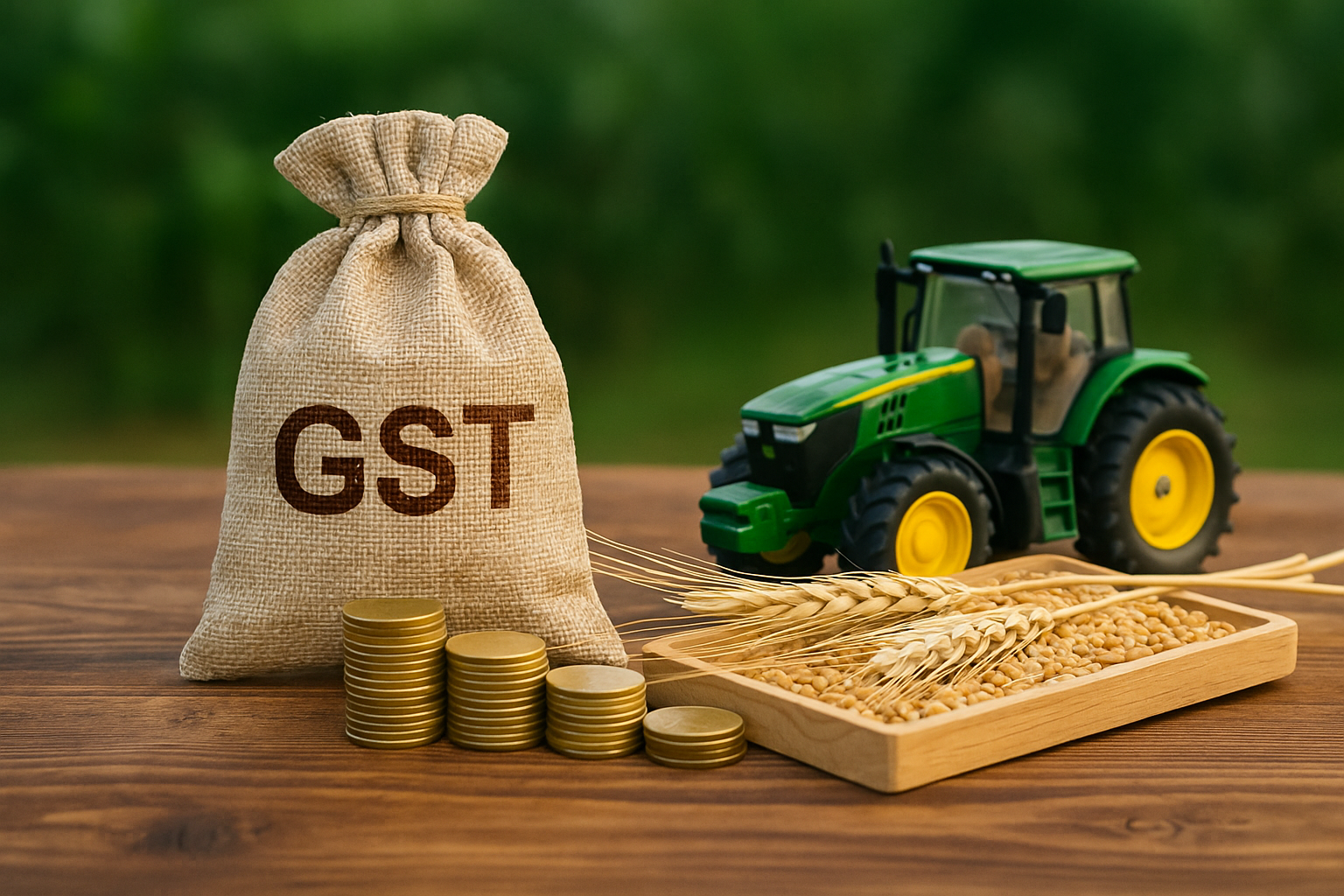
GST was rolled out in India in the year 2017. At that time, a conscious call was taken to keep the agricultural sector out of the scope of GST.
This was done since agriculture is a sector which cannot afford the additional tax and compliance burdens of GST as it provides foodgrains to the masses.
Yet, as GST has evolved, this blanket exemption has revealed significant drawbacks, creating inefficiencies and costs that ripple through the agricultural value chain.
Why Agriculture Escapes GST—and What It Means
Most unprocessed agricultural products, like fresh fruits, vegetables, grains, milk, and eggs, are exempt from the levy of GST.
While this is commendable, the issue is that this is an EXEMPTION and not ZERO RATING. Thus, all the inputs, capital goods and services which are consumed to produce the above are liable to GST and the farming sector has to bear this GST, and it does not get any input tax credit. This raises cultivation and processing costs, which either cut into farmers’ earnings or inflate consumer prices. Fertilisers, tractors, pesticides all carry a GST impact and all of this is currently borne by the farmer. As his produce is exempt, he is unable to claim any of the GST charged to him as credit. Thus, this GST gets factored into the cost.
The Packaging Puzzle
GST and the rate on goods which are unpacked, or pre-packed, labelled or not, carrying a registered trademark or not, has been a continuously evolving concept since the inception of GST.
In July 2022, the GST Council shook things up by taxing pre-packaged and labelled food products at 5%. Once produce is packaged and labelled per Legal Metrology rules, it is taxable, unlike loose, unpackaged goods. This is aimed to close revenue gaps and level the playing field between branded and unbranded sellers. But it has muddied the waters. A small cooperative selling bagged flour now faces tax obligations, while a trader selling loose flour does not.
Worse, taxpayers are hit with demand notices for the past, wherein they have to prove that the items sold by them previously were not pre-packed or pre-labelled or did not fall within the ambit of GST. This fine line between taxability and exemption is a huge bone of contention and is only causing more litigation in the industry.
Way Forward
Rather than blanket exemptions, zero-rating key agricultural products could help. Zero-rating keeps outputs tax-free but allows ITC, reducing costs while maintaining the credit chain. Alternatively, a tailored “Agri GST Regime” could simplify compliance. Clearer guidelines on what qualifies as “agricultural produce” would also reduce ambiguity.
(The writer, a Fellow Chartered Accountant (FCA), specialising in Goods, Services tax, Transfer Pricing and Income tax, is the co-author of the book ‘Comedium of Industrial Policy for MSMEs in Goa’ released by ICAI)